Ritu Kumar's Royal India
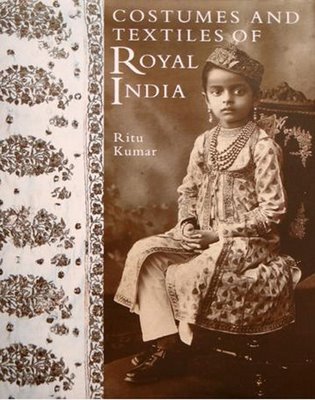 Cover: Princess Indira Raje Gaekwad of Baroda in 1905
Cover: Princess Indira Raje Gaekwad of Baroda in 1905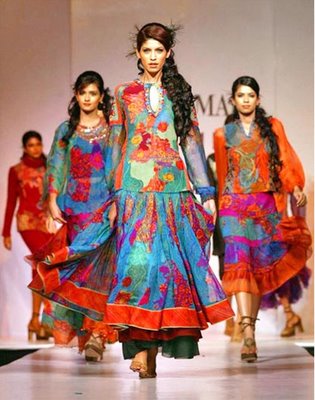
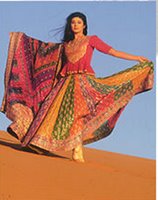
a look inside the book
When Ritu
Kumar opened her first boutique in Kolkata, off Park Street, in what was then called The Burlington Arcade, what she was doing seemed both obviously patriotic and exceptionally clever. I have a ghagra outfit from those days with a choli and odhni block printed to match in a motif and colors nobody had seen before, yet the fact that it was ready to wear took a lot of attention away from the fact that she was working to keep the art of block printing in future business. As Ritu's reach grew, she drew in many more traditions of fine workmanship into her design fold, and led the way for a new generation of designers to use the vast resources of extraordinary textile work still available from master craftsmen in India -- for new purposes, directly descended from their original use. Until then, the only new application of these arts had been occasional use in European couture, for which leadng designers would occasionally co-opt the craftsmanship for use in Western ornament made to order for non-Indian taste and then only when India happened to be "in." Now, these arts are regaining their vitality as the lifeblood of modern Indian design, which is a very different situation.
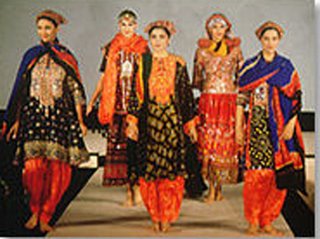
Costumes and Textiles of Royal India- When Ritu published this lavish present-
ation of her decades of study through Christie's Books in 1999, and shared the depth of her scholarly, historicist expertise so succinctly, this offering sparked and spurred a new movement to revive the development of Indian fashion. Since then, some of the images in this book have become iconic, and several are seen in other contexts online. One online journal, shaadi.com, shows the photograph from the book of Nawab Mansur Ali Khan and Begum Ayesha Sultan of Pataudi, or, if you will, Tiger Pataudi and Sharmila Tagore, as if it were their wedding picture. It is not; they were well into their glamorous middle age when it was taken, and she is wearing her mother-in-law's wedding outfit, not her own.
That first edition of Ritu's book went out of print too soon. Now republished by Antique Collectors' Club, this first American edition makes a veritable feast of scholarship readily available again. If I recall corectly, the first edition was so exorbitantly priced as to make one keel over as if hit with a coffee table; this edition is just very expensive, but needs a coffee table underneath anyway, for true convenience of handling and the slightest touch of ease in reading it.
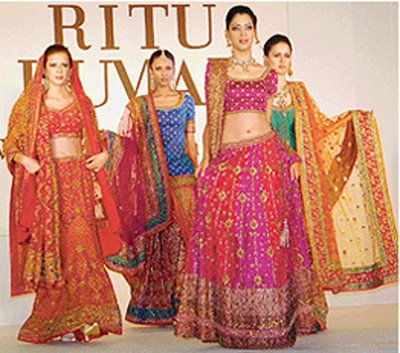 Read the foreword by Martand Singh
Read the foreword by Martand SinghReferencing everything from archaeological artefacts to family collections of clothing, as well as minatures of many schools, and oils by a plethora of portraitists, this book delivers a depth of perception rarely seen in any culture, and a range of understanding that should belong to all cultures. It is also beautiful to look at, and there are helpful diagramatic line drawings at the end that show the cut of traditional items of stitched clothing that are customarily worn with additional items of unstitched clothing. This tome is to scarf tying manuals as bobbin lace making is to macrame.
There is too, the presentation of highly worked and ornamented fabric and the use of pattern as an integral part of design and style, not simply decoration. A full text about textile techniques mastered in different parts of India explores seven kinds of resist dyeing, four traditons of print and cloth painting, embroideries and appliques (my aigu key isn't working), finishes, motifs, traditional buttons and fastenings, edgings, facings and types of texturing. As all this goes forward again, Indian fashion is reawakening to resume its place as the oldest, most complex and varied source of textiles and traditional apparel in the world.
Not unexpectedly, the glazed and haunted look of nineteenth and early twentieth century Indian royalty in the many painted portraits is replaced with cheerful vigor and unabashed grace and panache in the contemporary portrait photographs. This, regardless of the loss of privy purses and a multitude of privileges that must have come at a heavy price in lost self-determination.
Ritu deep in thought
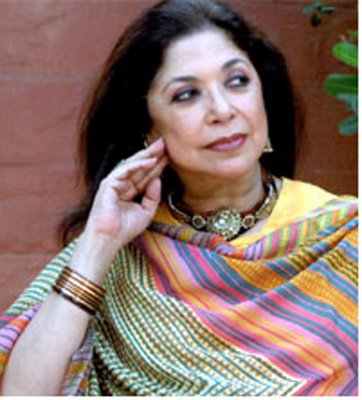

Yasho Rajya Lakshmi of Jammu and Kashmir as seen in the book and now on the family web site
ritukumar.com has less exalted but very attractive offerings available online at incredible prices.
"For centuries India's royalty promoted the skills of spinners, weavers, dyers, printers and embroiderers, commissioning textiles from renowned centres of excellence across the subcontinent. Delicate muslins from Dacca, fine silk brocades from Varanasi, complex woollen weaves from Kashmir – all were transformed into costumes fit for kings.
Acclaimed designer Ritu Kumar's celebration of thousands and years of craft and fashion is one of the most attractive books and a testimony to India‘s astoundingly rich cultural heritage." --ROYALTY MAGAZINE
more about Ritu from shaadi.com

<< Home